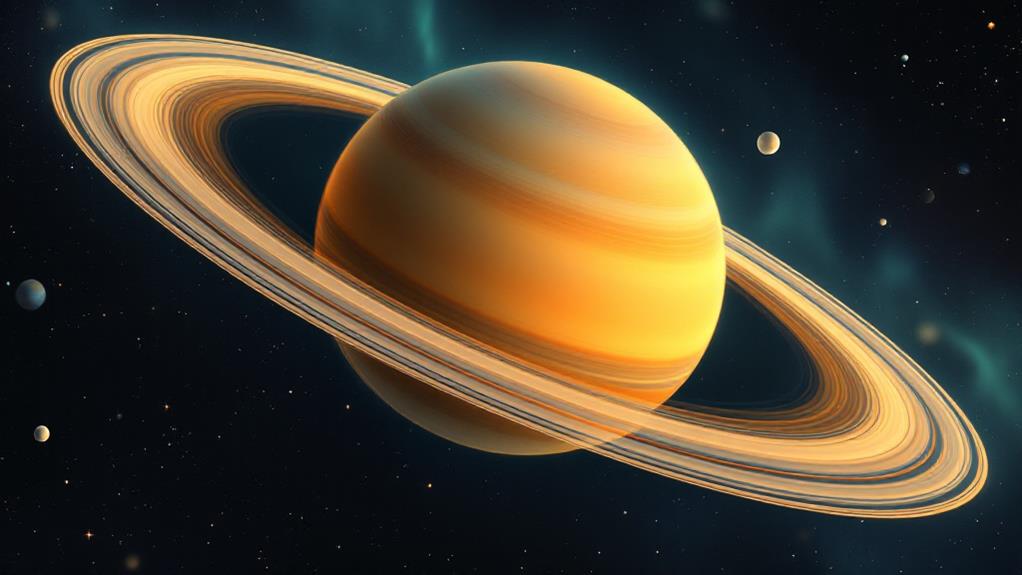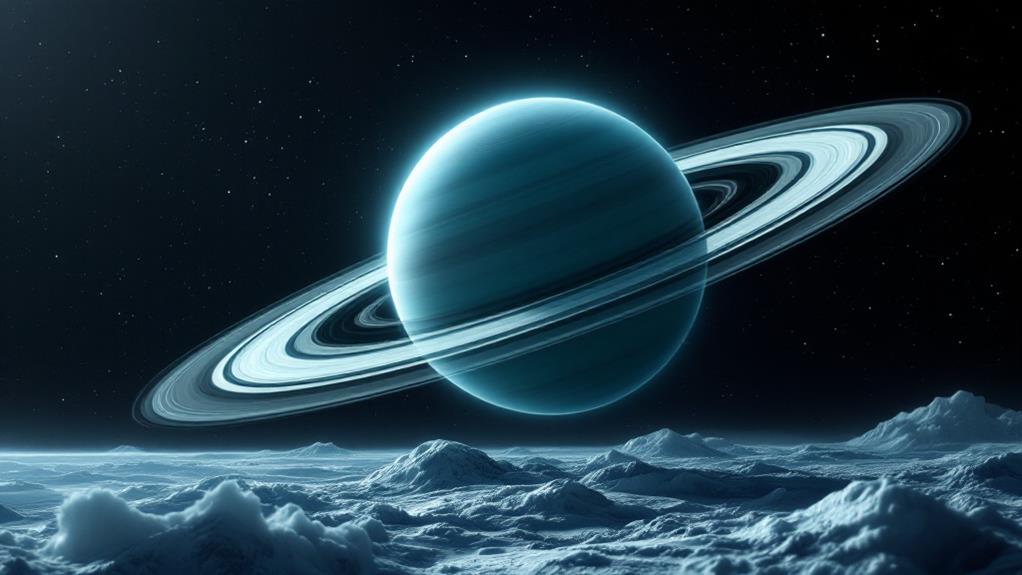Interesting Facts About Mars: The Red Planet’s Mysteries Unveiled
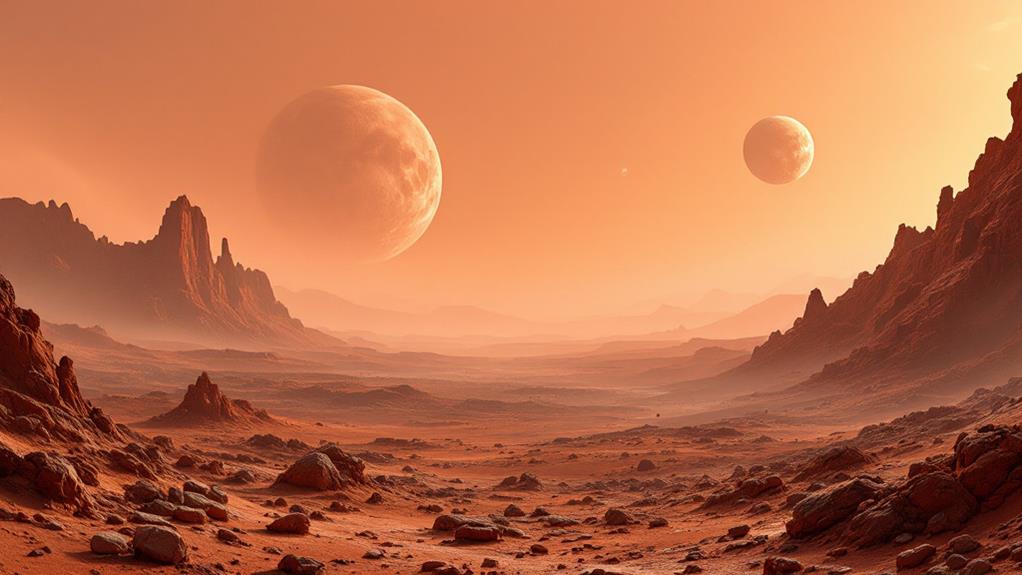
Mars, the Red Planet, is a world of captivating mysteries. You'll marvel at its rusty red surface, caused by iron-rich soil that oxidizes in the thin atmosphere. Olympus Mons, the largest known volcano in our solar system, towers over the Martian landscape. The planet's colossal canyon, Valles Marineris, dwarfs Earth's Grand Canyon. Ancient riverbeds and lake basins hint at Mars' watery past. Two tiny moons, Phobos and Deimos, orbit this alien world. Recent discoveries suggest the potential for microbial life, while extreme weather patterns shape the planet's surface. As you investigate Mars' wonders, you'll uncover a universe of fascinating facts about our celestial neighbor.
Mars' Rusty Red Appearance
Why is Mars often called the Red Planet? The answer lies in its distinctive rusty red appearance, which has captivated observers for centuries. This reddish hue isn't just a trick of the light; it's a result of the planet's unique composition and atmospheric conditions.
Mars' surface is covered in iron-rich soil, which oxidizes or "rusts" when exposed to the thin Martian atmosphere. This process gives the planet its characteristic red color, visible even from Earth with the naked eye. The iron oxide particles are so fine that they're easily lifted into the air during Mars' frequent dust storms, further contributing to the planet's red appearance.
These dust storms can be massive, sometimes engulfing the entire planet for months. As the fine, rusty particles swirl in the atmosphere, they create a reddish haze that reinforces Mars' nickname. The planet's thin atmosphere also plays a role, allowing more of the surface color to be visible from space compared to planets with thicker atmospheres. This combination of factors makes sure that Mars will continue to be known as the Red Planet for generations to come.
Olympus Mons: A Gigantic Volcano
While Mars' red hue is its most iconic feature, the planet's terrain holds even more fascinating wonders. Among these, Olympus Mons stands out as the largest known volcano in our solar system. This colossal shield volcano towers over the Martian landscape, reaching a staggering height of 21.9 kilometers (13.6 miles) - nearly three times the height of Mount Everest.
Olympus Mons' immense size isn't its only remarkable characteristic:
- It covers an area roughly the size of Arizona
- Its caldera spans 80 kilometers (50 miles) across
- The volcano's base is surrounded by a 6 km (4 mile) high cliff
You'll find that Olympus Mons' structure differs from Earth's volcanoes due to Mars' lower gravity and lack of tectonic plate movement. This allowed the volcano to grow to its enormous size without collapsing under its own weight. As you investigate its slopes, you'd encounter numerous cinder cone formations and extensive lava tube networks, evidence of its long history of volcanic activity. These features provide meaningful insights into Mars' geological past and potential for future examination.
Valles Marineris: The Grand Canyon
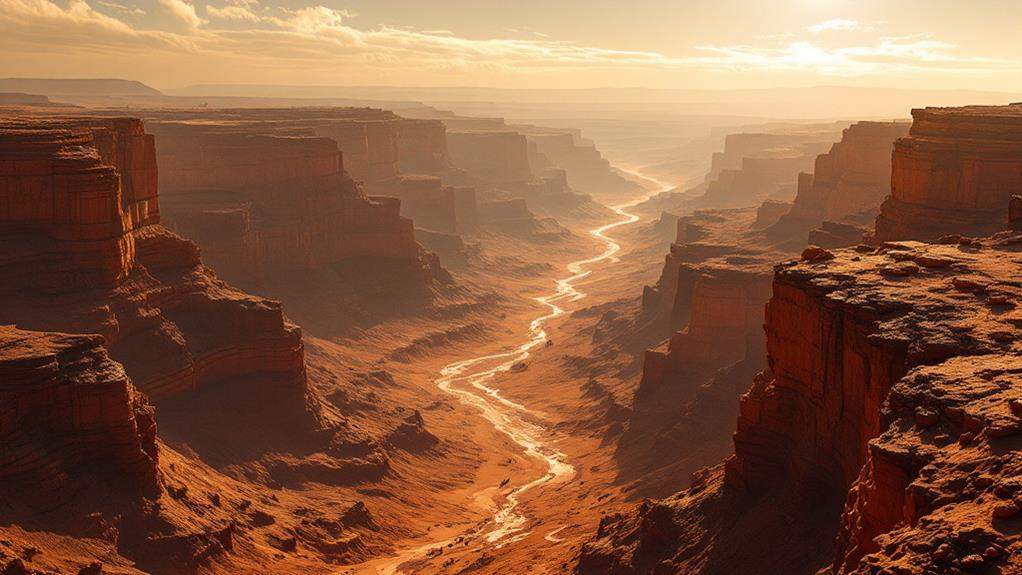
Often overlooked in favor of Olympus Mons, Valles Marineris is another breathtaking Martian landmark that'll leave you in awe. This colossal canyon system stretches across the Red Planet's surface for nearly 2,500 miles, dwarfing Earth's Grand Canyon in comparison. If you were to stand on its edge, you'd gaze down into chasms up to 7 miles deep.
Valles Marineris's origins are a subject of scientific debate. While some experts believe it formed through tectonic activity, others argue that volcanic processes played a significant role. You'll find evidence of both forces at work within the canyon's complex network of valleys and plateaus.
As you survey Valles Marineris, you'll encounter a diverse landscape shaped by millennia of erosion and geological shifts. The canyon's walls reveal layers of Mars's history, offering clues about the planet's past climate and potential for harboring life. Scientists continue to study this massive formation, hoping to uncover more secrets about Mars's evolution and the forces that shaped its surface.
Ancient Rivers and Lakes
Riverbeds and lakeshores, long since dried up, tell a fascinating tale of Mars's watery past. As you investigate the planet's surface through satellite imagery, you'll notice intricate networks of dried riverbeds and vast basins that once held ancient lakes. These features provide compelling evidence of past water on Mars, sparking excitement among scientists and space enthusiasts alike.
The presence of these ancient waterways suggests that Mars once had a thicker atmosphere and warmer climate, capable of supporting liquid water on its surface. You might be surprised to learn that some of these dried riverbeds span hundreds of kilometers, hinting at the scale of Mars's former hydrological systems.
- Jezero Crater: Once home to a river delta, now the landing site for NASA's Perseverance rover
- Eberswalde Delta: A well-preserved river delta system with visible sediment deposits
- Gale Crater: Site of an ancient lake explored by the Curiosity rover
As you examine Mars's watery history, you'll discover that these ancient rivers and lakes played a crucial role in shaping the planet's landscape and potentially nurturing conditions suitable for microbial life.
Martian Moons: Phobos and Deimos
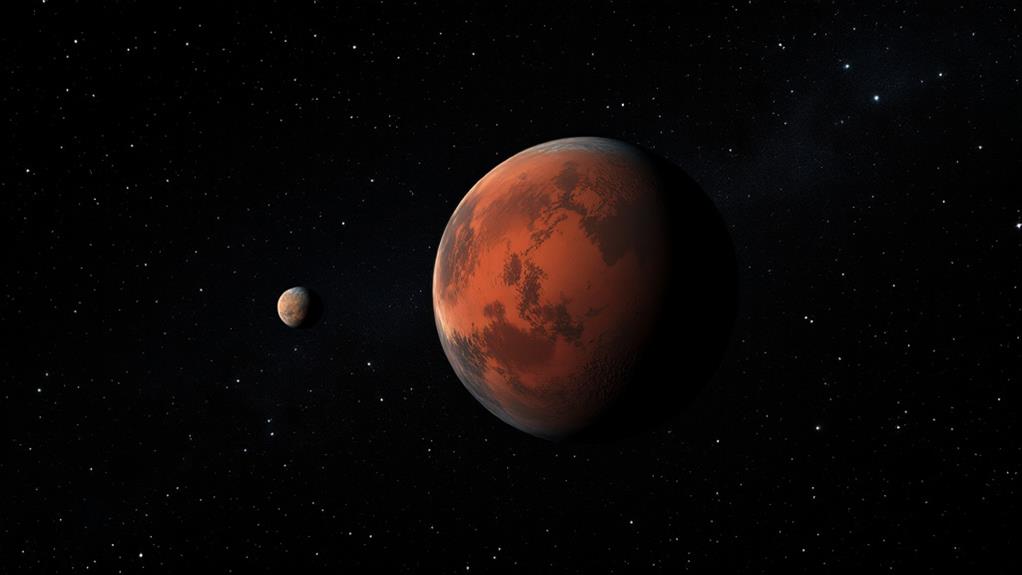
Mars's ancient waterways aren't the only celestial wonders in its neighborhood. The Red Planet boasts two small, irregularly shaped moons: Phobos and Deimos. Named after the Greek mythological twin characters of fear and panic, these tiny satellites have fascinated astronomers since their discovery in 1877.
You'll find Phobos, the larger of the two, orbiting closer to Mars. It's so near that it completes three orbits around the planet in just one Martian day. Deimos, on the other hand, takes about 30 hours to complete a single orbit. The martian moons' orbits are unique, with Phobos gradually spiraling inward and Deimos slowly drifting away from Mars.
The martian moons' origins remain a mystery. Some scientists believe they're captured asteroids, while others suggest they formed from debris left over from Mars's formation. Their small size and irregular shape support both theories. Phobos, in particular, is slowly being torn apart by Mars's gravity and may eventually form a ring around the planet or crash into its surface. These fascinating moons continue to intrigue researchers and offer meaningful knowledge into the Red Planet's history and future.
Potential for Microbial Life
Could life have once thrived on the Red Planet? The potential for microbial life on Mars has fascinated scientists and the public alike. While the planet's surface is inhospitable today, evidence suggests that Mars once had a thicker atmosphere and liquid water on its surface, conditions that could have supported life.
The potential for subsurface life remains a captivating possibility. Recent discoveries have fueled excitement:
- Detection of methane in Mars' atmosphere
- Presence of organic molecules in ancient mudstones
- Seasonal variations in methane levels
These findings have sparked intense debate about the origins of Martian methane. On Earth, methane is produced by both biological and geological processes. The methane detection on Mars could indicate ongoing geological activity or, more intriguingly, the presence of subsurface microorganisms.
Scientists are particularly interested in exploring Martian subsurface environments, such as underground aquifers or ice deposits, where microbial life might still exist. Future missions, including sample return efforts, will help uncover the mystery of whether Mars ever harbored life and if it potentially still does today.
Martian Weather and Atmosphere
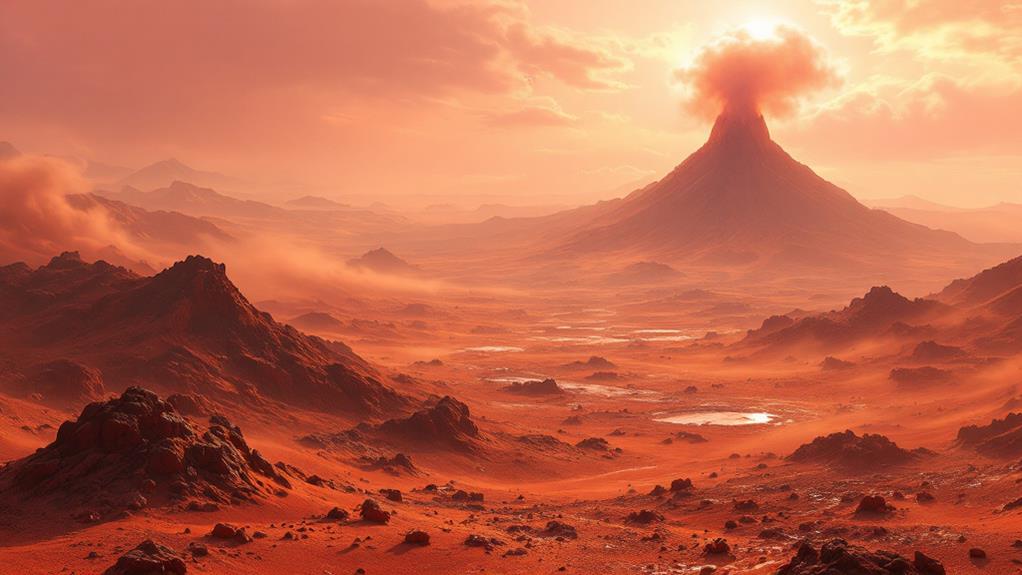
Despite its thin atmosphere, Mars experiences a diverse range of weather occurrences. You'll find that the Red Planet's climate is far from static, with temperatures varying dramatically between day and night. During the day, temperatures can reach a balmy 20°C (68°F) near the equator, while plummeting to a frigid -140°C (-220°F) at the poles during winter nights.
One of Mars' most striking features is its massive dust storms, which can sometimes engulf the entire planet. These storms can last for weeks or even months, dramatically altering the planet's appearance and climate. The Martian atmosphere, composed primarily of carbon dioxide, is incredibly thin, with an atmospheric pressure less than 1% of Earth's at sea level.
You'd be surprised to learn that Mars experiences seasons similar to Earth, due to its tilted axis. However, these seasons are nearly twice as long, given Mars' longer orbital period. Curiously, you might even encounter snow on Mars, though it's made of frozen carbon dioxide rather than water ice. The planet's unique weather patterns continue to fascinate scientists and fuel our curiosity about this enigmatic world.
Future Human Exploration Prospects
With the promise of new findings and technological advancements, human exploration of Mars is becoming an increasingly tangible goal. As you imagine stepping onto the Red Planet, you'll need to reflect on the human habitat requirements for such a mission. These include sustainable life support systems, radiation protection, and psychological well-being in an isolated environment.
Long-term sustainability challenges on Mars are significant, but scientists and engineers are working tirelessly to overcome them. You'll face obstacles like:
- Producing food and water in a harsh, alien environment
- Generating power for essential systems and equipment
- Managing waste and recycling resources efficiently
As you prepare for this unparalleled endeavor, you'll need to adapt to the Martian atmosphere and gravity. You'll rely on cutting-edge technology to create breathable air, maintain livable temperatures, and protect yourself from harmful radiation. The future of human exploration on Mars depends on innovative solutions to these challenges, as well as the development of reliable transportation systems for both the journey to Mars and surface exploration. With continued research and international collaboration, you might soon witness the first human footprints on Martian soil.
